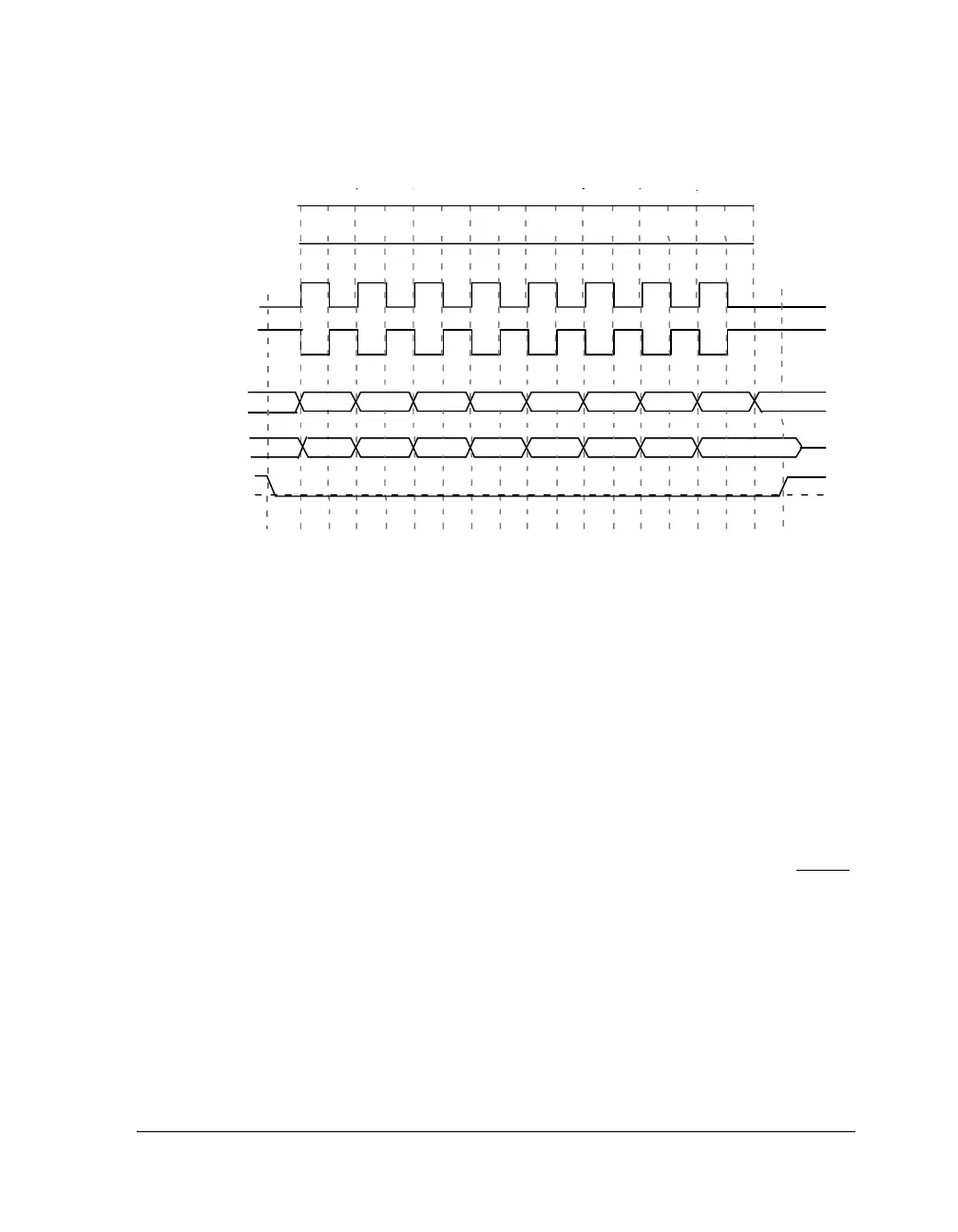ADSP-21368 SHARC Processor Hardware Reference 6-29
Serial Peripheral Interface Ports
Beginning and Ending an SPI Transfer
An SPI transfer’s defined start and end depend on: whether the device is
configured as a master or a slave, whether CPHASE mode is selected, and
which transfer initiation mode (TIMOD) is selected. For a master SPI with
CPHASE = 0, a transfer starts when either the TXSPI register is written or the
RXSPI register is read, depending on the TIMOD selection. At the start of
the transfer, the enabled slave-select outputs are driven active (
LOW). How-
ever, the
SPICLK starts toggling after a delay equal to one-half the SPICLK
period. For a slave with CPHASE = 0, the transfer starts as soon as the SPIDS
input transitions to low.
For CPHASE = 1, a transfer starts with the first active edge of SPICLK for
both slave and master devices. For a master device, a transfer is considered
complete after it sends and simultaneously receives the last data bit. A
transfer for a slave device is complete after the last sampling edge of
SPICLK.
Figure 6-6. SPI Transfer Protocol for CPHASE = 1
1
CLOCK CYCLE
NUMBER
SPICLK
CLKPL= 0
(SPI MODE1)
MOSI
FROM MASTER
MISO
FROM SLAVE
SPIDS
TO SLAVE
SPICLK
CLKPL= 1
(SPI MODE3)
2 3 4 5 6 7 8
*
6
6 5 4 3
5 4 3 2 1 LSB *
2 1 LSB
MS B
MS B
*=UNDEFINED
*

